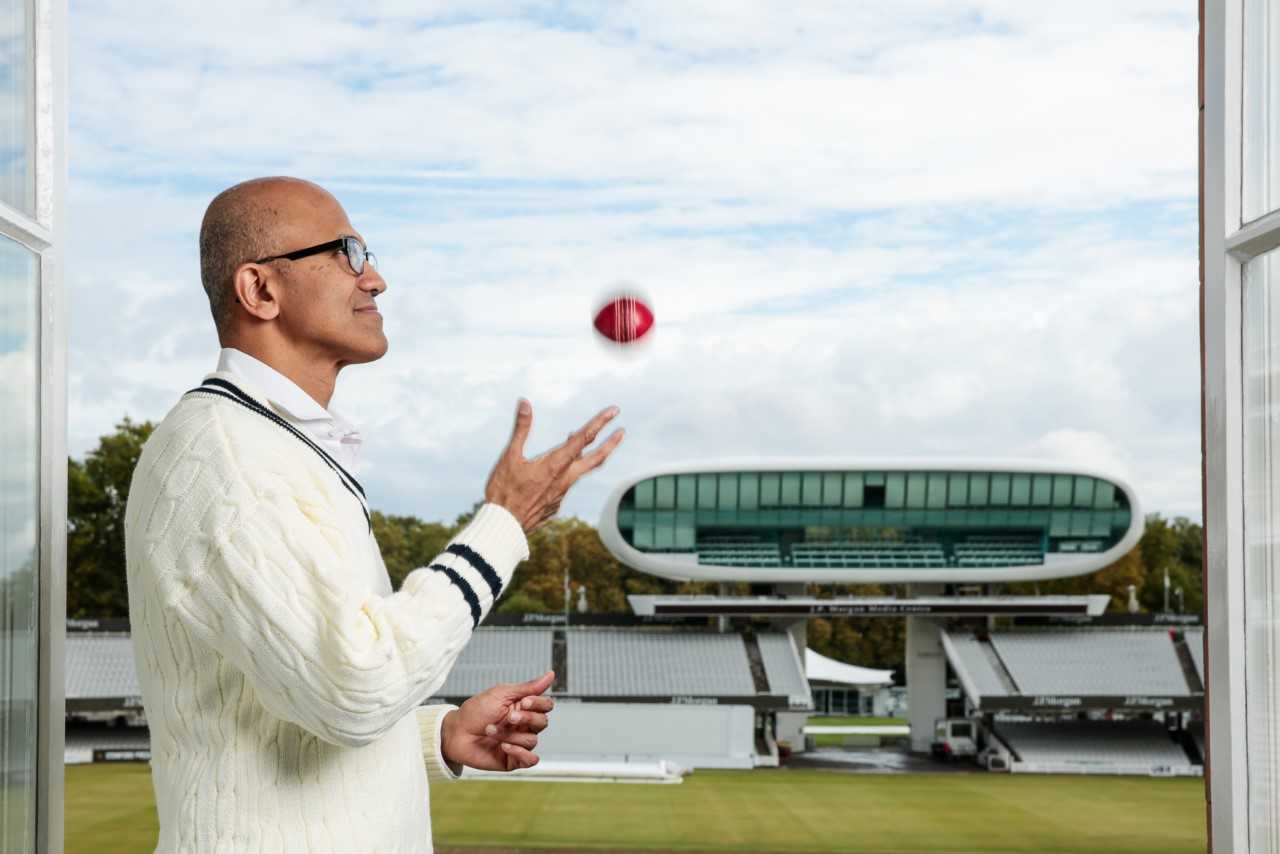

Microsoft chief executive Satya Nadella
Satya Nadella says one of his first tasks when he became CEO of Microsoft in 2014 was to question why the company existed and to return it to its roots.
Nadella, who joined Microsoft in 1992, was a leftfield choice for the role, with former Nokia CEO Stephen Elop and Ford CEO Alan Mullally considered frontrunners to replace the outgoing Steve Ballmer.
At the time, Microsoft was a company with many assets but struggling to maximise their value, but in the three years since, Nadella has been widely credited with transforming the company into a more open, innovative organisation centred on new technologies powered by the cloud.
Speaking at Lord’s Cricket Ground to launch his book Hit Refresh, which discusses this transformation, his early life in India and his love of cricket, Nadella says the Microsoft he inherited was very different to the one he joined in 1992 when the mission was to put a PC on every desk in every home around the world.
“It was very empowering because we had a clear purpose,” he explains. “By the late 1990s, at least in the developed world, we had more or less achieved that. What do we do now?
“In 2014, I thought it was necessary to ask the existential question ‘Why does Microsoft exist?'”
“It’s not about our technology, its about what others can do with our technology. I wanted us to go back to those roots.”
Upon his accession to Redmond’s throne, Nadella identified artificial intelligence (AI), the cloud, mixed reality and quantum computing as the next tranche of technologies that will change the world.
Microsoft dropped the ball when it came to mobile, something which is recognised by past and present executives and by calamitous strategies, culminating in the disastrous acquisition of Nokia in 2013.
Nadella’s Microsoft isn’t looking back in anger, only forward, and he is adamant the company will dance to its own tune.
“My main thing about these three technologies is not to claim Microsoft is the only company doing it, but to take these technologies and apply a sense of purpose, he says.
“We have to compete, but not be driven by envy of other’s success. [We must] be grounded in our sense of purpose, then compete.”
Former CEO Steve Ballmer once called open source Linux “a cancer” but Microsoft is now a member of the Linux Foundation. It is signing up numerous partners for its Azure and Office 365 platforms and most recently agreed to work with Amazon to allow Cortana to work with Alexa.
“Our interest is serving our customers’ long term interests and that requires cooperation,” says Nadella.
“Every sector of the economy … is becoming a digital economy. I want to work with pretty much every one of our customers like we have worked with software vendors in the past.”
As for specific technologies, Nadella sees mixed reality – a combination of augmented and virtual realities – as the next stage in computing. Its HoloLens device is an early attempt at this and he believes mixed reality can change the concept of presence.
“Mixed Reality is the ultimate computing experience,” he argues. “Your field of view is the combination of analogue and digtial. You’re not looking for a PC, mobile or screen: it’s just there.”
Page: 1 2
American space agency prepares for testing of Boeing's Starliner, to ensure it has two space…
As UK and Europe develop closer military ties, European Commission says it will invest €1.3…
Zuckerberg seeks to revive Facebook's original spirit, as Meta launches Facebook Friends tab, so users…
Notable development for Meta, after appeal against 2021 WhatsApp privacy fine is backed by advisor…
First sign of shake-up under new CEO Lip-Bu Tan? Three Intel board members confirm they…
Trump's nominee for SEC Chairman, Paul Atkins, has pledged a “rational, coherent, and principled approach”…